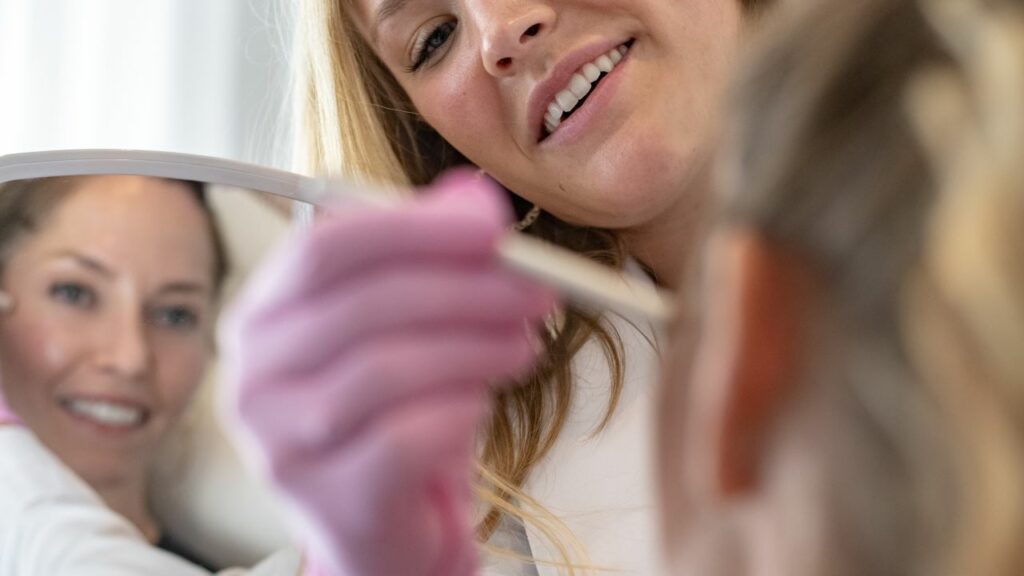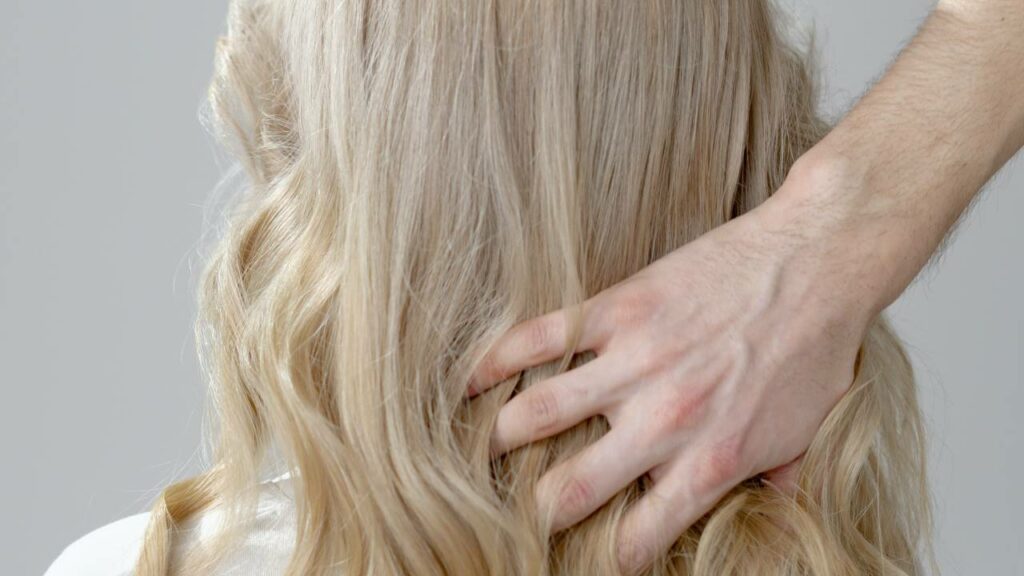Achieve Luscious Locks: PRP for Hair Treatment Guide

Platelet-Rich Plasma (PRP) therapy is a groundbreaking treatment in the field of hair restoration. Utilizing the body’s own healing power, it stimulates hair growth and effectively combats hair loss. This guide, brought to you by Honey Skincare Studio, provides an in-depth look into PRP for Hair Treatment, offering a complete understanding of how you can achieve luscious locks using this innovative procedure.
The appeal of PRP therapy lies in its use of the body’s natural resources to promote hair growth. The procedure involves drawing a small quantity of the patient’s blood, processing it to isolate the platelet-rich plasma, and then injecting this concentrated solution into the scalp. These platelets are abundant in growth factors that activate and rejuvenate cells within the hair follicle, stimulating hair thickness and volume.
Whether you’re dealing with hair thinning or simply want to enhance your hair’s health and density, PRP treatment could be the solution you’ve been searching for. In this guide, we will delve into the mechanism of PRP therapy, its benefits, any potential side effects, and what to anticipate during and after the treatment. Let us help you navigate your journey to achieving healthier, fuller hair.
What is PRP for Hair?

Platelet-Rich Plasma (PRP) therapy is a cutting-edge treatment for hair loss that harnesses the body’s own healing abilities. This three-step procedure involves drawing a patient’s blood, processing it, and then injecting it into specific areas of the scalp.
The concept behind PRP lies in its ability to stimulate natural hair growth by increasing the blood supply to the hair follicle, which subsequently thickens the hair shaft. PRP therapy, rich in growth factors and cytokines, can potentially awaken dormant hair follicles and promote new hair growth.
It has been increasingly recognized as a proactive, therapeutic option for both male and female patients experiencing hair loss.
Understanding Hair Loss
Hair loss, or alopecia as it is medically known, is a condition that can be deeply distressing. Affecting both men and women across different age groups, it typically manifests as thinning hair or bald patches.
The severity and nature of hair loss can vary greatly from person to person. It can be a gradual process, with hair thinning over time, or it can occur suddenly, resulting in rapid loss of hair.
Hair loss can be confined to the scalp or affect the entire body depending on the cause. It’s important to note that losing a few strands of hair daily is a normal part of the hair growth cycle. However, when hair loss becomes excessive, it can lead to more noticeable conditions such as baldness or bald spots if left untreated.
Understanding the underlying causes of hair loss is crucial in determining the most effective treatment approach.
Common Causes of Hair Loss
Hair loss, a condition that can significantly affect self-esteem and confidence, can be triggered by a myriad of factors. These range from genetic predisposition to lifestyle choices, dietary habits, stress levels, and various medical conditions. Understanding the root cause is essential for effective treatment. Let’s delve into some common causes:
Genetic Factors
Genetics play a pivotal role in influencing the texture, color, and density of your hair. A prime example of this is Androgenetic alopecia, more commonly known as male-pattern or female-pattern baldness.
This hereditary condition, driven by a combination of genes and hormonal activity, leads to progressive thinning and loss of hair in a distinctive pattern. From the crown of the head in men to a broadening part in women, this type of hair loss is often predictable but can be managed with appropriate treatment.
Hormonal Changes
Various stages of life marked by significant hormonal changes, such as pregnancy, childbirth, menopause, or thyroid imbalances, can trigger temporary or permanent hair loss. For instance, postpartum hair loss is a common phenomenon due to declining estrogen levels after childbirth. Similarly, conditions like polycystic ovary syndrome (PCOS), characterized by hormonal imbalance and metabolism problems, can also result in hair thinning or more severe hair loss.
Medical Conditions or Treatments
There are certain medical conditions and treatments known to cause hair loss. Alopecia areata, an autoimmune disorder where the immune system attacks hair follicles, results in sudden hair loss. Scalp infections like ringworm can invade the hair and skin of your scalp, leading to scaly patches and hair loss.
Trichotillomania, a psychological disorder characterized by the urge to pull out one’s hair, can also lead to hair loss over time. Moreover, treatments like chemotherapy, used to kill cancer cells, can cause temporary severe hair loss, as it affects all cells in the body, including hair follicles.
Role of PRP in Healing and Regeneration

Platelet-Rich Plasma (PRP) therapy is a groundbreaking treatment that utilizes the body’s natural healing capabilities to repair damaged tissues and stimulate regeneration. It has been effectively used in various fields of medicine, including orthopedics, dentistry, and dermatology.
At the heart of PRP therapy are platelets, cell fragments in our blood that initiate clotting and promote healing. These platelets are rich in growth factors, proteins that play a crucial role in repairing injuries, promoting cell proliferation, and facilitating tissue regeneration. When PRP is injected into damaged tissues, it delivers a high concentration of growth factors that accelerates the healing process.
In the context of hair loss, PRP therapy harnesses these growth factors to stimulate the activity of hair follicles and promote new hair growth. It invigorates dormant hair follicles, improves blood circulation to the scalp, and enhances the thickness of the hair shaft, thereby combating hair thinning and baldness.
The Procedure of PRP Hair Treatments
The process of PRP hair treatment is a minimally invasive one that can be broken down into three primary steps:
Step 1: Blood Collection
The first step involves drawing a small amount of the patient’s blood, typically from the arm. This blood serves as the source of the PRP.
Step 2: Processing the Blood
The collected blood is then placed in a centrifuge, a machine that spins at high speed. This spinning separates the blood components based on their densities, resulting in the isolation of a concentrated layer of platelets in plasma – the PRP.
Step 3: Injection of PRP
Once the PRP is prepared, it is injected into the areas of the scalp that show signs of hair thinning or loss. The growth factors contained in the PRP work to stimulate hair follicle activity and promote hair growth.
Benefits of PRP for Hair

PRP (Platelet-Rich Plasma) therapy, a revolutionary treatment for hair loss, offers a range of benefits for individuals grappling with this problem. The procedure leverages the body’s innate healing mechanisms, providing a natural and effective solution to hair loss.
Natural and Biocompatible Treatment
One of the key advantages of PRP therapy lies in its use of the patient’s blood. This approach ensures the treatment is completely natural and biocompatible, significantly reducing the risk of allergic reactions or compatibility issues that can sometimes arise with other treatments. This personalized treatment harnesses the body’s own healing properties, offering a safe and natural way to combat hair loss.
Stimulates Hair Growth
Harnessing the power of your own body’s healing abilities, PRP for hair restoration has emerged as an innovative treatment in the field of hair regrowth. This therapy is rich with growth factors – proteins that are fundamentally involved in cell multiplication and tissue regeneration.
When this platelet-rich plasma is administered into areas of the scalp affected by hair loss, these potent proteins stimulate the hair follicles’ activity. Consequently, this stimulation promotes the emergence of new, healthy hair. For those grappling with the effects of hair thinning or loss, PRP for hair restoration presents an effective therapeutic option to restore hair health and vitality.
Enhances Hair Thickness
In addition to promoting new hair growth, PRP therapy also works to improve the thickness of the hair shaft. By enhancing the blood supply to the hair follicle, it provides the nutrients necessary for hair to grow thicker and healthier.
The end result is not just more hair, but fuller, healthier-looking hair, which can significantly improve the individual’s appearance and confidence.
Minimally Invasive with Quick Recovery
Compared to surgical treatments for hair loss, PRP therapy is a minimally invasive procedure. It involves drawing a small amount of the patient’s blood, processing it to extract the platelet-rich plasma, and then injecting this into the scalp.
This process causes little to no discomfort and does not require any significant downtime. Patients can typically return to their normal activities immediately after the procedure. The recovery time is significantly shorter compared to surgical alternatives, making it a convenient option for many patients.
Potential Side Effects and Risks of PRP
While Platelet-Rich Plasma (PRP) treatment is a highly effective and safe solution for hair loss, like all medical procedures, it may have potential side effects. However, these are usually minimal and temporary, and understanding them can help you make an informed decision about the treatment.
Mild Sensation or Discomfort
During the PRP treatment, blood is drawn and PRP is injected into the scalp using a needle. This might cause a mild sensation or discomfort at the injection site. Some people may experience a slight pressure or ‘pinch’ during the injection. However, to ensure your comfort, a local anesthetic is typically applied before the procedure, which significantly alleviates any discomfort.
Temporary Swelling and Redness
Swelling and redness at the injection sites can be common after PRP treatment. However, these are normal and temporary reactions as your body kickstarts its healing response.
The intensity of swelling and redness varies among individuals, but rest assured, these symptoms usually diminish within a few days.
Low Risk of Infection
Infections from PRP treatments are extremely rare, thanks to the rigorous sterile techniques adhered to during the procedure. Ensuring patient safety is paramount, and any signs of infection, such as increasing discomfort, redness, or pus, should be reported to your healthcare provider immediately.
They are prepared to promptly address and resolve any concerns, providing you with peace of mind throughout the process.
Cost of PRP Treatment for Hair Loss
The cost of PRP treatment for hair loss can vary widely depending on several factors. These include the geographical location, the expertise of the practitioner, the number of sessions required, and whether additional treatments are combined with the PRP therapy.
On average, PRP treatments can range anywhere from $400 to $3,500 for three treatments. Mostpatients require multiple sessions, typically spread out over several months, to achieve the desired results. It’s also worth noting that PRP therapy for hair loss is often considered a cosmetic procedure and is not typically covered by health insurance.
Before beginning treatment, it’s advisable to have a discussion with the healthcare provider to understand the total cost involved. Additionally, some clinics may offer payment plans or financing options to make the treatment more affordable.
Take the First Step to Fuller Hair with Honey Skincare Studio
Are you ready to explore the potential of PRP therapy for your hair? Don’t miss out on this chance to revitalize your hair health and boost your confidence. Dive into our comprehensive guide to understand how PRP can help you achieve luscious locks. Let Honey Skincare Studio be your trusted partner in your journey towards fuller, healthier hair. Book your appointment today!
Frequently Asked Questions
What to do before prp hair treatment?
What to avoid after prp hair treatment?

Subscribe to our newsletter and stay updated.
FEATURED PRODUCTS
